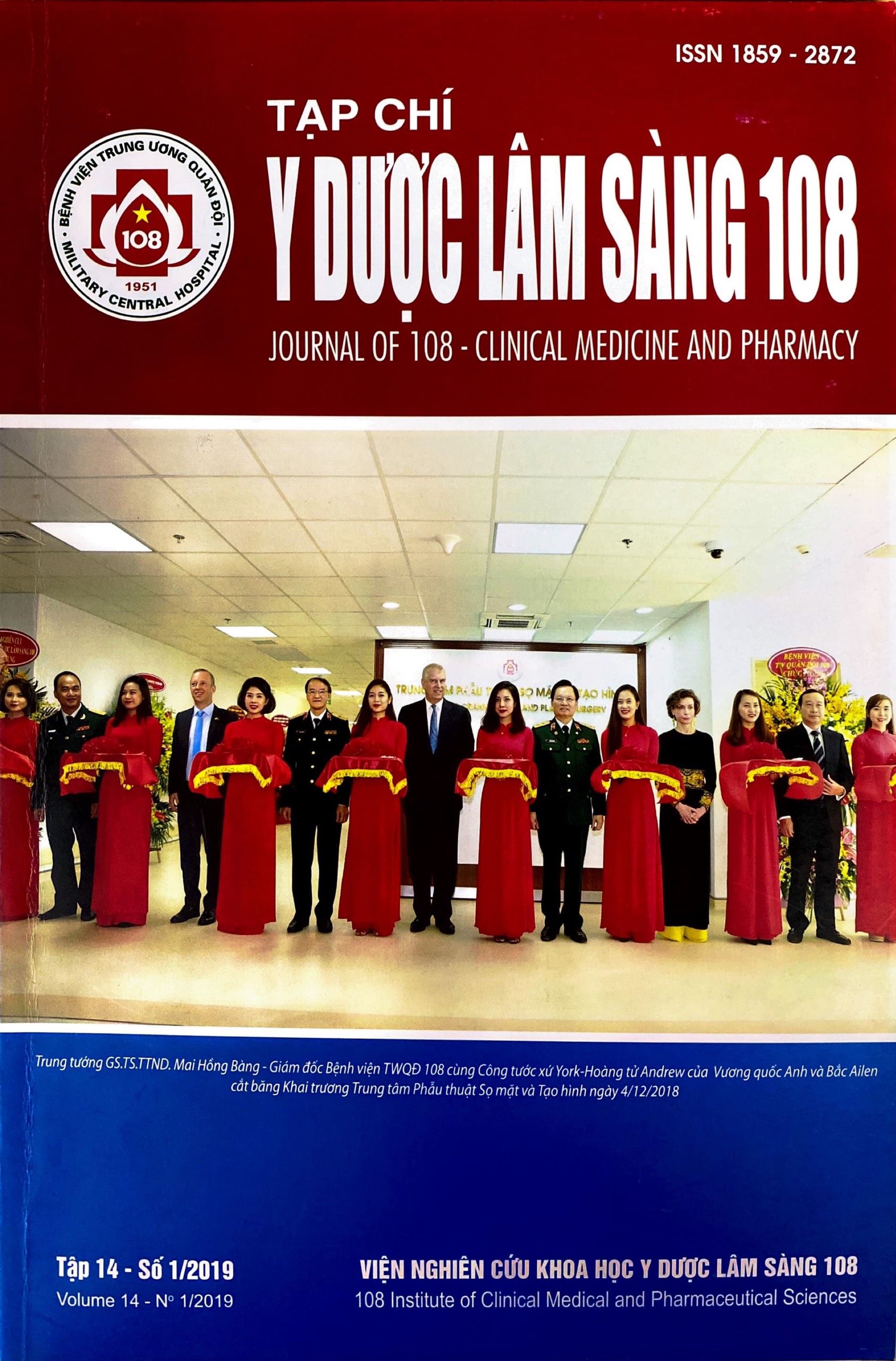Left ventricular systolic function in septic shock by speckle-tracking echocardiography
Main Article Content
Keywords
Abstract
Objective: We investigate the measurement of longitudinal myocardial strain by speckle tracking echocardiography for the diagnosis of sepsis-induced myocardial dysfunction. Subject and method: This is a prospective, observational study on 90 patients with septic shock and 37 patients with sepsis according to criteria of SCCM/ESICM (2016). This study was perfomed at 108 Military Central Hospital from June 2017 to December 2018. Transthoracic echocardiography and speckle tracking echocardiography for all patients within 24 hours of diagnostic onset. Result: Global longitudinal strain in septic shock group was significant greater than sepsis group (-14.6 ± 3.3% vs -17.1 ± 3.3%, p<0.01). However, left ventricular ejection fraction between 2 group did not differ (p>0.05). Conclusion: Speckle tracking echocardiography is more sensitive than the conventional echocardiography for the early detection of left ventricular systolic dysfunction.
Article Details
References
2. Basu S, Frank LH, Fenton KE et al (2012) Two-dimensional speckle tracking imaging detects impaired myocardial performance in children with septic shock, not recognized by conventional echocardiography. Pediatr Crit Care Med 13(3): 259-264.
3. Dalla K, Hallman C, Bech-Hanssen O et al (2015) Strain echocardiography identifies impaired longitudinal systolic function in patients with septic shock and preserved ejection fraction. Cardiovasc Ultrasound 13: 30.
4. Geyer H, Caracciolo G, Abe H et al (2010) Assessment of myocardial mechanics using speckle tracking echocardiography: Fundamentals and clinical applications. J Am Soc Echocardiogr 23(4): 351-369, quiz 453-455.
5. Miller RR, Dong L, Nelson NC et al (2013) Multicenter implementation of a severe sepsis and septic shock treatment bundle. Am J Respir Crit Care Med 188(1): 77-82.
6. Ng PY, Sin WC, Ng AK et al (2016) Speckle tracking echocardiography in patients with septic shock: A case control study (SPECKSS). Crit Care 20(1): 145.
7. Shahul S, Gulati G, Hacker MR et al (2015) Detection of myocardial dysfunction in septic shock: A speckle-tracking echocardiography study. Anesth Analg 121(6): 1547-1554.
8. Singer M, Deutschman CS, Seymour CW et al (2016) The third international consensus definitions for sepsis and septic shock (Sepsis-3). Jama 315(8): 801-810.
9. Sturgess DJ, Marwick TH, Joyce C et al (2010) Prediction of hospital outcome in septic shock: A prospective comparison of tissue Doppler and cardiac biomarkers. Crit Care 14(2): 44.
10. Yingchoncharoen T, Agarwal S, Popovic ZB et al (2013) Normal ranges of left ventricular strain: A meta-analysis. J Am Soc Echocardiogr 26(2): 185-191.
 ISSN: 1859 - 2872
ISSN: 1859 - 2872
